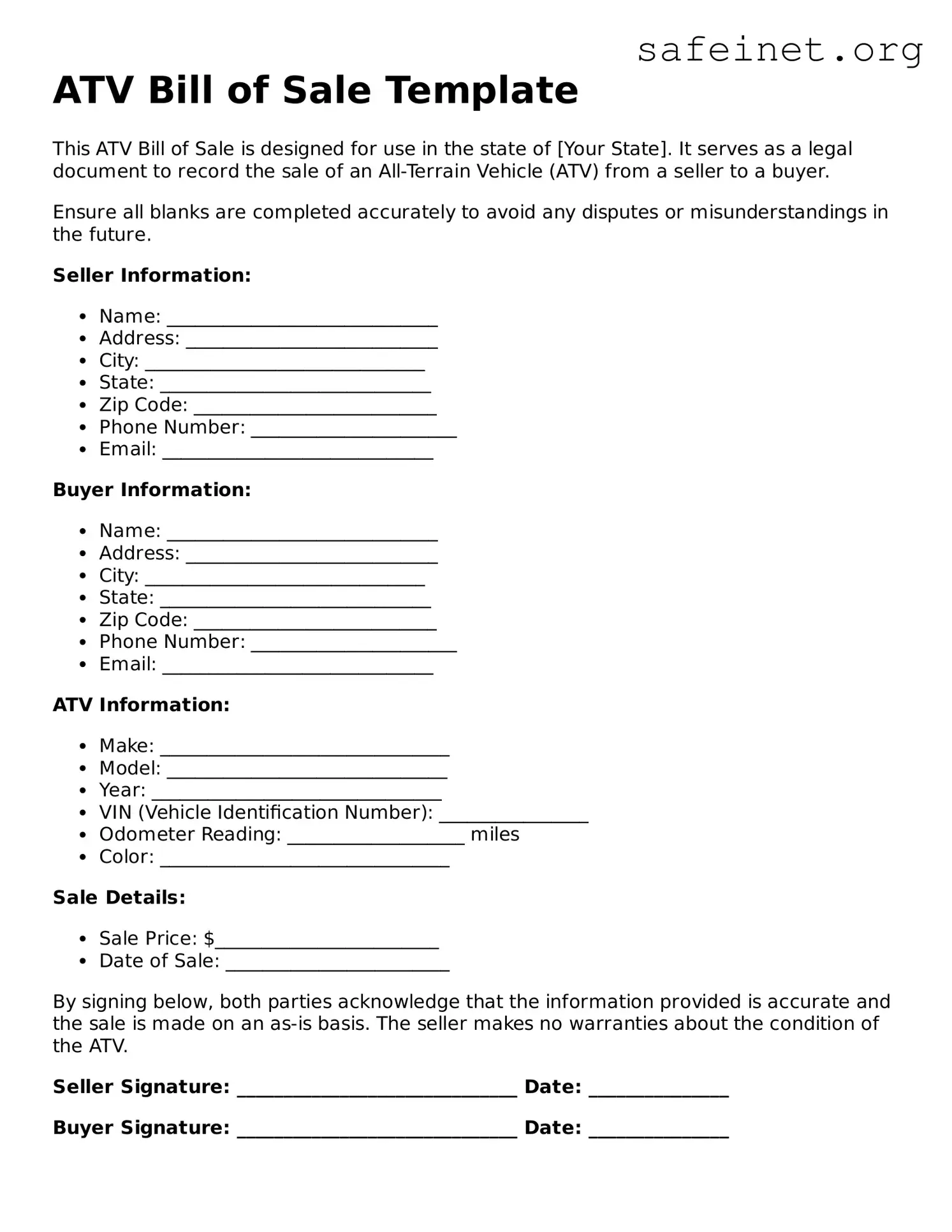What is an ATV Bill of Sale?
An ATV Bill of Sale is a legal document that records the sale of an all-terrain vehicle (ATV) from one party to another. This form includes information about the buyer, the seller, the ATV's details (like make, model, and VIN), and the sale price. It's essential for transferring ownership and can serve as a proof of sale for both parties.
Do I need an ATV Bill of Sale to register my ATV?
Yes, if you purchase an ATV, most states require an ATV Bill of Sale to register it in your name. This document provides the necessary proof of ownership that your local department of motor vehicles (DMV) or equivalent authority needs for registration purposes. Always check your state's specific requirements regarding registration for ATVs.
Can I create my own ATV Bill of Sale?
Absolutely! You can create your own ATV Bill of Sale as long as it contains all the required information. Generally, you'll need details such as the buyer’s and seller’s names and addresses, the ATV’s description (including make, model, year, and VIN), the sale price, and the date of sale. Ensure both parties sign the document to make it valid.
What happens if I don't use a Bill of Sale?
Without an ATV Bill of Sale, you may face challenges when trying to register your ATV or when proving ownership in case of disputes. This can complicate future sales or transfers, and you might encounter legal issues if the seller claims they still own the vehicle. Using a Bill of Sale provides important records for both parties and can protect your interests.
Is a Bill of Sale enough to prove ownership of my ATV?
While an ATV Bill of Sale is a vital document for proving ownership, it may need to be accompanied by other paperwork for complete validation, such as the previous title. If the ATV was previously titled, you will likely need the title along with the Bill of Sale for registration. Always check local regulations for your state to ensure you have all necessary documentation.
